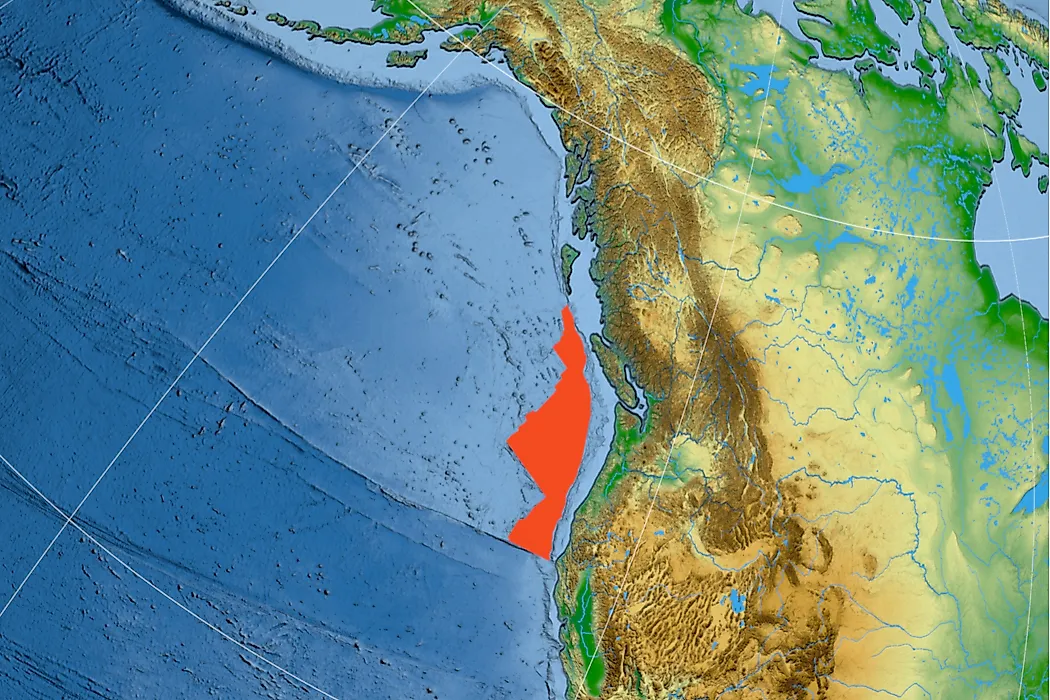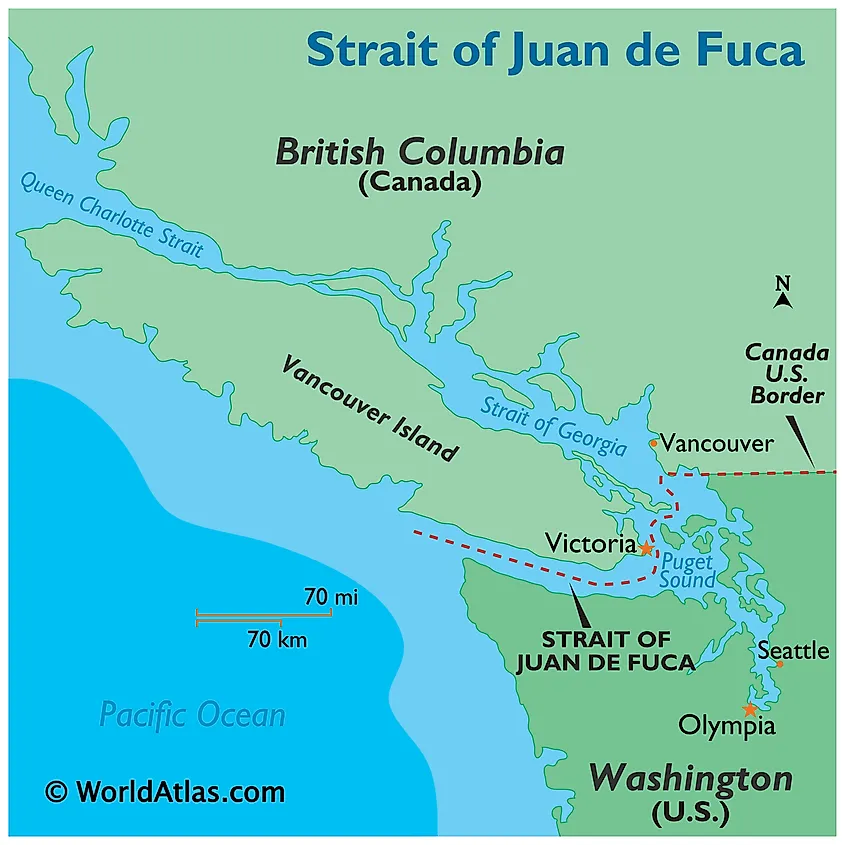
The Enduring Echoes: America’s Legends, from Mythic Straits to Modern Myths
America, a nation forged in revolution and expansion, is as much a landscape of stories as it is of mountains and prairies. From the ancient oral traditions of its first peoples to the whispers of modern cryptids, legends are the invisible threads that weave through its history, shaping its identity, reflecting its fears, and embodying its aspirations. These aren’t merely quaint tales; they are powerful narratives that have charted courses, launched expeditions, and built heroes, often blurring the lines between fact and the fervent human desire for meaning. In this journalistic exploration, we delve into the rich tapestry of American legends, with a particular focus on one enigmatic figure whose name is etched onto the map despite the shadows of doubt: Juan de Fuca.
Long before European sails dotted the horizon, the vast North American continent was alive with sophisticated mythologies. Indigenous legends, passed down through generations, served as origin stories, moral guides, and explanations for the natural world. The Navajo tell of Changing Woman, who created the first people, while the Iroquois speak of the Sky Woman falling from the heavens to create the Earth on the back of a giant turtle. Trickster figures like Coyote (across many Western tribes) and Raven (in the Pacific Northwest) embodied both chaos and creation, teaching lessons through their mischievous exploits. These foundational myths are not just folklore; they are the bedrock of cultural identity, connecting people to their land, their ancestors, and the spiritual forces that govern existence. They underscore a profound respect for nature and a cyclical understanding of time, a stark contrast to the linear, conquest-driven narratives that would soon arrive.
With the arrival of European explorers, a new layer of legend began to overlay the ancient ones. Driven by insatiable curiosity, the lure of riches, and the promise of new lands, these adventurers brought their own myths and generated new ones in the vast, unknown wilderness. Tales of El Dorado, a city of gold, propelled Spanish conquistadors like Francisco Pizarro and Gonzalo Jiménez de Quesada into the Amazonian rainforest, their relentless pursuit often ending in futility and destruction, but forever fueling the imagination. Ponce de León, another Spanish explorer, famously sought the mythical Fountain of Youth in Florida, his quest becoming synonymous with the eternal human desire for immortality. These legends, born of European fantasy projected onto a new world, spoke to an era of boundless ambition and the belief in a land teeming with wonders yet to be discovered.

It is into this crucible of exploration and myth-making that the figure of Juan de Fuca emerges, a name that resonates with the tantalizing promise of a fabled shortcut: the Northwest Passage. Born Ioannis Phokas in Kefalonia, Greece, around 1536, he served under the Spanish crown as a navigator. His claim to fame, and the core of his legend, rests on a supposed voyage in 1592. According to his account, relayed decades later to English merchant Michael Lok in Venice in 1596, de Fuca was sent by the Viceroy of New Spain (Mexico) to find the mythical Strait of Anian – the fabled Northwest Passage connecting the Atlantic and Pacific oceans.
De Fuca claimed that after sailing north along the Pacific coast, he found a broad inlet between 47° and 48° North latitude, with a large island at its mouth. He sailed into this "great inland sea" for more than 20 days, noting the land "was rich of gold, silver, and pearls," and observing "men in the land clad in beast’s skins." He was convinced he had found the elusive strait. This was a monumental claim, one that promised to revolutionize global trade by dramatically shortening the sea route from Europe to Asia.
The intriguing aspect of de Fuca’s story is its posthumous publication and the persistent skepticism surrounding it. Michael Lok, captivated by de Fuca’s tale, published it in 1625 in Samuel Purchas’s Purchas His Pilgrimes, decades after de Fuca’s death. Lok’s account emphasized de Fuca’s inability to secure payment from the Spanish crown for his discovery, suggesting a motivation for sharing his story with an English merchant. For years, the existence of the strait and de Fuca’s voyage were considered highly dubious, dismissed by many as the ramblings of an old man seeking attention or recompense. The sheer difficulty of navigating such a passage, combined with the lack of corroborating Spanish records, cast a long shadow over his credibility.
Yet, the legend endured. The allure of the Northwest Passage was too strong to be easily dismissed, and de Fuca’s description, however vague, offered a tantalizing possibility. In the late 18th century, as British and American navigators intensified their search for the passage, the name Juan de Fuca resurfaced. In 1787, English captain Charles William Barkley, aboard the Imperial Eagle, sailed into a large body of water at roughly the latitude de Fuca had described. He named it the Strait of Juan de Fuca, immortalizing the Greek navigator despite the lingering uncertainty of his original claim. This act of naming cemented de Fuca’s legend into the very geography of North America, a testament to the enduring power of a story, even one shrouded in mystery. Today, the Strait of Juan de Fuca, separating Washington State from Vancouver Island, stands as a tangible link to a legend, a physical manifestation of an explorer’s dubious claim and humanity’s unyielding quest for discovery.
Beyond the grand quests of exploration, American legends rooted themselves in the everyday lives of its developing communities. The colonial era, marked by religious fervor and societal anxieties, gave rise to tales like the Salem Witch Trials of 1692-93. While a historical tragedy of mass hysteria, the trials have become legendary, symbolizing the dangers of intolerance and fear-mongering, their chilling narrative echoing through American literature and popular culture. Similarly, Washington Irving’s "The Legend of Sleepy Hollow" (1820) introduced the Headless Horseman, a spectral figure born of local folklore and Revolutionary War tales, forever intertwining the Hudson Valley with supernatural dread and a sense of history’s haunting presence.
As the young nation pushed westward, the frontier became a fertile ground for new legends, embodying the rugged individualism and expansive spirit of America. Folk heroes like Paul Bunyan, the colossal lumberjack whose feats of strength shaped the landscape, and Johnny Appleseed (John Chapman), who tirelessly planted apple trees across the Midwest, became embodiments of human triumph over nature, symbols of progress and perseverance. These were not historical figures in the traditional sense, but composites of human aspiration and the epic scale of American expansion.
The Wild West, in particular, spawned a pantheon of legendary figures. Outlaws like Jesse James and Billy the Kid were often romanticized, their daring exploits and defiance of authority transformed into tales of anti-heroes battling oppressive systems. Lawmen like Wyatt Earp and Wild Bill Hickok became paragons of justice in a lawless land. These legends, often embellished by dime novels and later Hollywood, helped forge a national identity rooted in courage, self-reliance, and a touch of rebellious spirit, even if the reality was far grittier. The myth of the "empty" frontier, ripe for conquest, also became a powerful, albeit problematic, legend that fueled Manifest Destiny and often erased the pre-existing Indigenous presence.
In the modern era, legends continue to evolve, reflecting contemporary anxieties and fascinations. The vastness of America, its diverse landscapes, and its advanced technology have become the backdrops for a new generation of myths. Cryptids like Bigfoot, a large, ape-like creature said to roam the Pacific Northwest forests, captivate the imagination, representing the untamed wilderness and the enduring mystery of the unknown. UFO sightings, particularly around sites like Area 51 in Nevada, tap into a blend of scientific curiosity, government distrust, and the enduring human question of life beyond Earth. Urban legends, shared through social media and campfire stories, highlight modern fears – from poisoned Halloween candy to internet hoaxes – demonstrating that the human need for compelling narratives remains undiminished.

From the ancient spirits of the land to the enigmatic claims of Juan de Fuca, and from the larger-than-life figures of the frontier to the elusive shadows of modern cryptids, America’s legends are more than just stories. They are living archives of its collective memory, its dreams, and its demons. They are the echoes of a diverse past, continually reinterpreted and retold, reminding us that the search for meaning, the thrill of discovery, and the power of a compelling narrative are as fundamental to the American experience as its very geography. In every whisper of a forgotten path, every debated claim of a historical figure, and every new monster lurking in the shadows of the digital age, the legends of America continue to unfold, inviting us to explore not just the land, but the very depths of the human imagination.


